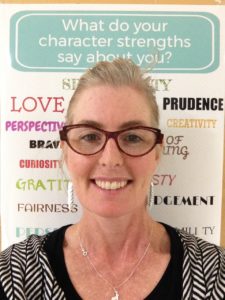
By Sarah Murray
Traditional models to access learning usually require the teacher to rush from group to group to assess learning. This can be chaotic with the cacophony of students talking within their groups, managing those who are off task and engaging those who are actively disengaged.
Paolo Friere, a Brazilian educator and philosopher, and author of Pedagogy of the Oppressed, stated “If the structure does not permit dialogue the structure must be changed”.
Flipgrid is a tool that not only destabilizes the traditional structure of the classroom with the teacher as the predominant voice, but furthermore allows for the collection of authentic voices that can be responded to over time. Flipgrid prides itself on building a student-centered community of learners where all learners have a voice. It democratizes learning.
 Flipgrid is a user-friendly video app that allows teachers to create topic “grids” to which students respond by video recording themselves. The videos are collected in a grid format on a website under the teacher-created topic which can then be viewed by anyone in the class or others with the link and password. As an engagement tool to encourage social learning through discourse, it is extremely easy to use and incredibly versatile.
Flipgrid is a user-friendly video app that allows teachers to create topic “grids” to which students respond by video recording themselves. The videos are collected in a grid format on a website under the teacher-created topic which can then be viewed by anyone in the class or others with the link and password. As an engagement tool to encourage social learning through discourse, it is extremely easy to use and incredibly versatile.
The app allows teachers to assess a Flipgrid as a “speaking” product, as an observation of learning and as a conversation between learners. These are the three ways Ontario teachers are encouraged to assess for learning as expressed eloquently by educational leader and author Sandra Herbst and as supported in many provincial Ministry of Education curriculum documents.
Educational technology tools are a strategic way to bridge the gap between the practice of instruction and learning theories. As an educational technology tool, Flipgrid effectively bridges the gap between the theory of discourse and social learning and the practice of speaking and using video to communicate ideas. As Derek Acorn indicates in his article in this edition, Using Tech and Social Media To Enhance Your Summer Reading Program, it also is a way to build a virtual community of readers who may share their responses to books and create a venue for reader advocacy (if they are aware and know how truly simple the tool is to use!).
The Benefits of Using Flipgrid in the Classroom:
Versatility. Flipgrid can be coordinated with a wide range of educational apps including Book Creator. It can also be used in any subject area, including physical education provided students bring their phones to gym. See the Flipgrid blog for more educator generated ideas for use in the classrooms and library learning commons.
 Social Learning. Students can actively engage in learning by sharing their ideas. They can view other student responses and record a response back, which provides for the sharing of many different perspectives. Students not only learn from the teacher’s model but from other students. The tool promotes cognitive learning in a social context.
Social Learning. Students can actively engage in learning by sharing their ideas. They can view other student responses and record a response back, which provides for the sharing of many different perspectives. Students not only learn from the teacher’s model but from other students. The tool promotes cognitive learning in a social context.
Fosters Global Citizenship and Communication. Any person in the world with access to the Flipgrid app, link and password, can join the grid and share their responses to student videos and their own videos. For example, during the Global Read Aloud, teachers are collaborating with classes all over the world to share their responses to Refugee by Alan Gantz.
 Student Engagement. Students may engage in teacher-created thought provoking topics, but what hooks them to engage is the opportunity to use stickers to doctor the faces of their selfies before saving their videos. Teachers may also turn this feature off if they find it too distracting for their students.
Student Engagement. Students may engage in teacher-created thought provoking topics, but what hooks them to engage is the opportunity to use stickers to doctor the faces of their selfies before saving their videos. Teachers may also turn this feature off if they find it too distracting for their students.
Practice the Art of Speaking. Flipgrid allows students the opportunity to hone their speaking skills in a less agonizing way than in front of a classroom of peers. Students may erase, edit and re-record themselves until they are satisfied with their final product. They may also pause mid-recording to reflect and start again.
Evidence of Learning. A flipgrid is an excellent exit card activity to assess for learning at the end of a lesson or as a diagnostic at the beginning of a lesson to assess for prior knowledge of a topic. Students may also be evaluated for their critical responses to other speakers.
Practice Digital Citizenship Skills. Students have the opportunity to practice positive feedback and commenting when responding to other student work in a controlled setting where students may not be anonymous. Flipgrid has internal safeguards for flagging inappropriate videos and teachers may delete videos from the grid.
Potential Barriers
Socially Insecure Students. This app is difficult for intensely shy and defended students as they can not stand to hear their voice or see themselves on video. These students are often the deep thinkers who may express themselves more effectively in writing, yet sit silently before a laptop camera. Intensely private students have difficulty being vulnerable before a camera that will forever keep their awkward images and responses. Students may use items like a favourite stuffy or related object to hold in front of the camera for an audio only recording. Although it may decrease student anxiety for speaking in front of large groups of students, it does not mitigate the anxiety of having to share videos with others and trust they will not ridicule it. As a side note, my 48 year old husband, an accomplished healthcare executive who is regularly interviewed by media, was beside himself with agitation when confronted with the glare of the Flipgrid camera. After erasing and re-recording his immigration story umpteen times, we gave up.
Authenticity? How authentic is a response if a student is merely reading a text that they prepared for the question? Is a response authentic if it has been rehearsed and re-recorded until perfection? Students still need to be coached to brainstorm ideas, practice conversations and then go live without a script. A benefit is that Flipgrid allows students plenty of time to think before they speak. Students who are introspective learners have time to process their ideas before sharing them on Flipgrid.
Exposure Therapy
Facing your fears helps you overcome them! Flipgrid should not entirely replace students speaking face-to-face or to a large group as these skills are still valuable in our society. Students who struggle with anxiety need scaffolded support, yet should be held accountable and encouraged to face their fear in order to overcome it, and not have all the opportunities for personal growth swapped out for the emotional ease of a Flipgrid.
Infrastructure
This application requires a stable Internet connection and access to devices. Although Flipgrid works on any computer and may be used on any iOS or Android phone as an app, students still need access to both a device and a stable internet connection.
Testimonials
Grade 7/8 Drama and Language Teacher, Jessica Sutherland: I have used Flipgrid in my classroom and found it to be a flexible and easy-to-use tool. I appreciate the ease of access to videos and how it works on Chromebooks, iPads and cell phones. Flipgrid saves time by cutting out the recording, uploading and sharing steps that made video response recording responses daunting and time consuming. Both teachers and students benefit from this tool by allowing students to express what they know orally and giving teachers access to their individual voices.
Grade 9 Student, Ler: I kind of like it. You don’t have to present to the whole class. It gives you time to think before you speak so you know better what you want to say. It is way easier to use than We Video. I like using the stickers ‘cause they are fun.

Grade 12 English Teacher, Sara Berry: Flipgrid is an excellent way to encourage students to engage in meaningful discussion using an online forum. In my ENG4U class, Grade Twelve students identified examples of satire in the media, and used Flipgrid as a medium to analyze their chosen media texts. Students were able to attach a media text to their section of the grid, and orally communicate their thoughts on why the piece was satirical. Flipgrid, as opposed to a live discussion, allows students to craft and review their responses before submitting. As a result, students were able to analyze parodies of McDonald’s commercials and the popular television series The Bachelorette in an organized and coherent way while using appropriate tone and diction. One student suggested that Flipgrid actually helped her improve her oral communication since she was able to play back her video recording, and revise it before submitting. Students also expressed that they learned from viewing the responses of their peers. I will continue to use Flipgrid in the classroom.
Resources and Support
Each month Flipgrid showcases a Student Voice Rockstar educator who has used the app in an innovative way to inspire other teachers. Learn from other teachers using Flipgrid @ the Flipgrid blog. Educators may also download the ebook The Educator’s Guide to Flipgrid and follow the authors Karly Moura and Sean Fahey on Twitter.
Pricing: Flipgrid is 100% free for educators! Sign up to start creating meaningful classroom discussions and empower students to share their voice!
Giving All Learners a Voice
In closing, Flipgrid is a tool to democratize the classroom by giving all learners a voice, not just the teacher and those brave enough to raise their hand. Some educators might mistakenly assume that younger users are less self-conscious or that they are more narcissistic in the age of YouTube. Yet, students still need to be able to have crucial conversations with one another and in front of larger audiences in order to hone their public speaking skills. This will enable their dreams, as lifelong learners, to become future captains of industry or social activists! In the meantime, Flipgrid allows students to hone their speaking skills in a deliberate and mindful way.
To read objective reviews of other educational technology apps see www.commonsense.org.
References
Freire, P. (2000). Pedagogy of the oppressed, 3rd ed. New York: Bloomsbury Academic.
 Sarah Murray is a high school teacher-librarian and English teacher with over 15 years of experience in the Ottawa Catholic School Board. Her passion is literacy and she is an active advocate for reading in her school community. Her core character strength is the love of learning as she seeks to implement a character strengths approach to both teaching and parenting. Sarah is a member of the CSL Journal Editorial Board.
Sarah Murray is a high school teacher-librarian and English teacher with over 15 years of experience in the Ottawa Catholic School Board. Her passion is literacy and she is an active advocate for reading in her school community. Her core character strength is the love of learning as she seeks to implement a character strengths approach to both teaching and parenting. Sarah is a member of the CSL Journal Editorial Board.